Demos
Demos
Stackable Demos
Possible uses of the Stackable Data Platform
The following data stack application examples demonstrate how easily and flexibly the Stackable Data Platform can be used for very different use cases. All demos deliberately focus on one topic at a time and:
- use stackablectl to install
- can be set up 1:1 on your environment
- demonstrate contexts step by step
- are available as open source code in Github
Highlights:
Enjoy the Demos:
Demo: data-lakehouse-iceberg-trino-spark
Data Lakehouse technology showcase
This technology demo showcases some of Stackable’s latest features.
The demo contains elements of previous demos i.e.
- real-time event streaming with Apache NiFi
- Trino for SQL access and
- visual data display and analysis with Apache Superset
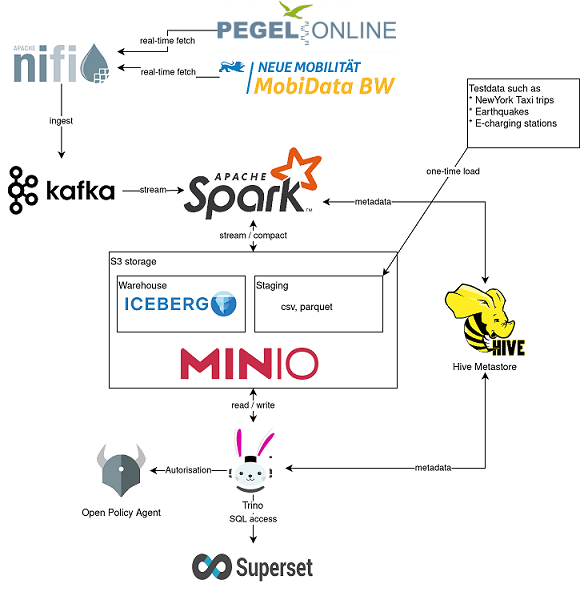
But, adding to this, the demo also includes new lakehouse features such as the integration with Apache Iceberg providing e.g. transactional consistency and full schema evolution.
The result is a powerful blueprint for a modern data stack with the Stackable Data Platform.
Other highlights of the demo:
- Apache Spark: A multi-language engine for executing data engineering, data science, and machine learning. This demo uses it to stream data from Kafka into the lakehouse.
- Open policy agent (OPA): An open source, general-purpose policy engine that unifies policy enforcement across the stack. This demo uses it as the authorizer for Trino, which decides which user is able to query which data.
HOW-TO start,
within a Kubernetes-Cluster:
stackablectl demo install data-lakehouse-iceberg-trino-spark
(note: tested on 10x4core nodes with each 20GB RAM and 30GB HDD, persistent volumes with a total size of approximately 1TB)
Note: if you are looking for a smaller setup, please take a look at our trino-iceberg demo:
stackablectl demo install trino-iceberg
Demo: SPARK-K8S-ANOMALY-DETECTION-TAXI-DATA
Machine Learning for outlier detection
This Stackable Data Platform demo is an extension of the original TRINO-TAXI-DATA demo with Apache Spark™.
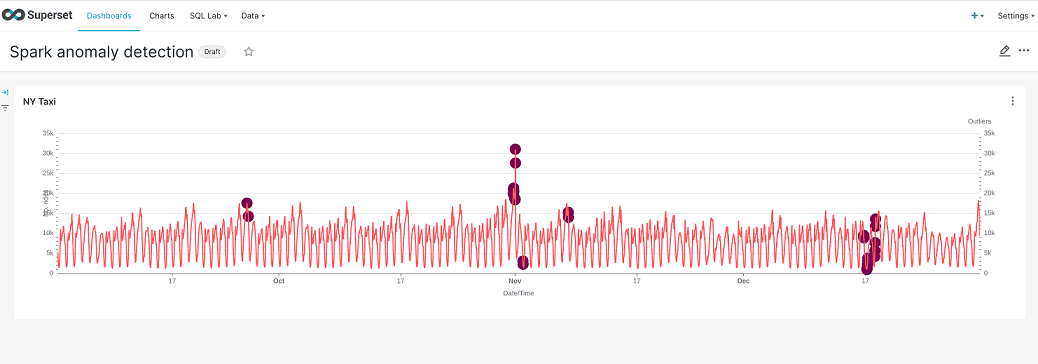
An often neglected factor when using data for machine learning is data quality. False measurements, missing values and the like distort the subsequent prediction quality. In certain scenarios, spikes, outliers, or other anomalies in the data are also relevant, in that they can form a basis for defining alerts.
Thus, the detection of outliers makes an important contribution to the successful use of data. Nowadays, science and industry use a variety of procedures and methods for this purpose.
In this demo, outlier detection is exemplified using Apache Spark by running an isolation forest algorithm on the data. The isolation forest algorithm is used for unsupervised model training, which means that the model does not require labeling.
Results of the detection are stored in Apache Iceberg format and visualized using Apache Superset.
HOW-TO start,
within a Kubernetes-Cluster:
stackablectl demo install spark-k8s-anomaly-detection-taxi-data
Demo: NIFI-kafka-druid-water-level-data
Real-time display of water levels
Low water or danger of flooding – the water levels of our rivers have moved into the public interest in times of climate change.
Our Stackable Data Platform demo shows the water levels of rivers in near real-time for Germany based on data from Pegel Online.
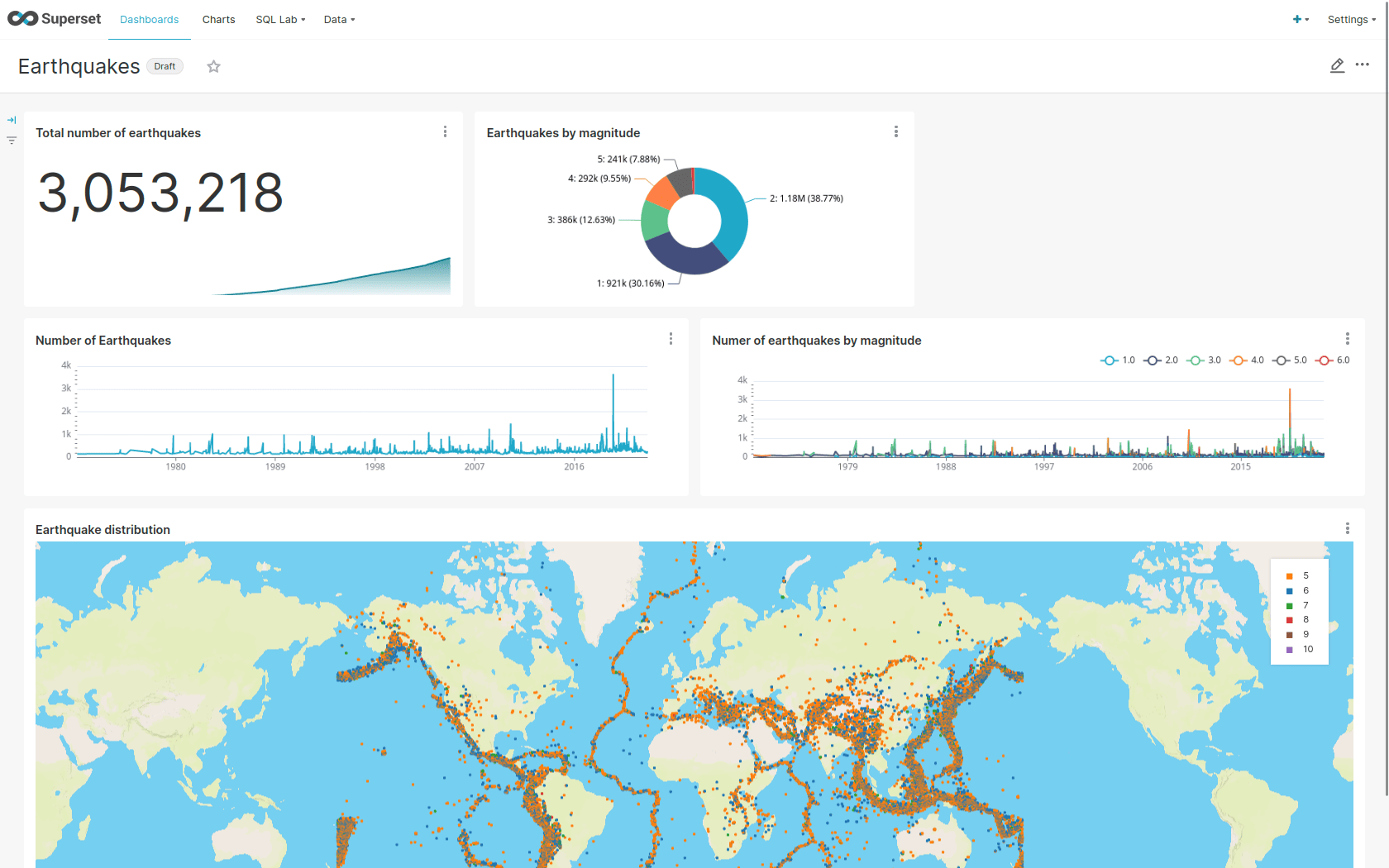
Several components of the Stackable Data Platform play together without requiring much configuration effort:
Apache Nifi and Kafka are used to fetch water level measurements from gauging stations distributed across Germany via an API from Pegel Online and store them in Apache Druid.
Druid is a scalable real-time database that can be queried using SQL. This method is used in the demo to query gauge levels via Apache Superset and visualize them in the dashboard. For permanent storage, Druid requires a so-called “deep storage”, which is implemented in our example via MinIO as an S3-compatible object store, as it is available in most public and private cloud environments.
HOW-TO start,
within a Kubernetes-Cluster:
stackablectl demo install nifi-kafka-druid-water-level-data
Demo: trino-taxi-data
Analysis with a data lake
This Stackable Data Platform demo shows data stored in S3 for analysis up to display in the dashboard.
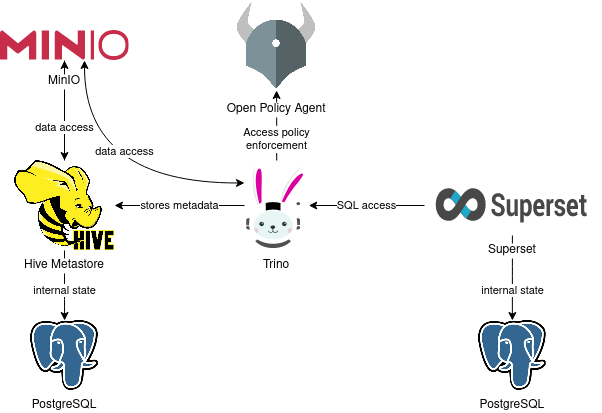
Our Stackable operators are used to configure and roll out various components. In particular, this example shows how role-based data access can be implemented using the Open Policy Agent:
- MinIO, an S3-compatible object store, persistently stores the data for this demo.
- Hive-Metastore stores the metadata necessary to make the sample data accessible via SQL and is used by Trino in our example.
- Trino is our extremely fast, distributed SQL query engine for Big Data analytics that can be used to explore data spaces and that we use in the demo to provide SQL access to the data.
- Finally, Apache Superset we use to retrieve data from Trino via SQL queries and build dashboards on that data.
- Open Policy Agent (OPA): an open source, universal policy engine that unifies policy enforcement across the stack. In this demo, OPA authorizes which user can query which data.
HOW-TO start,
within a Kubernetes-Cluster:
stackablectl demo install trino-taxi-data
Demo: NIFI-kafka-druid-earthquake-data
Event streaming of earthquake data
This Stackable Data Platform demo shows streamed earthquake data end-to-end up to the dashboard.
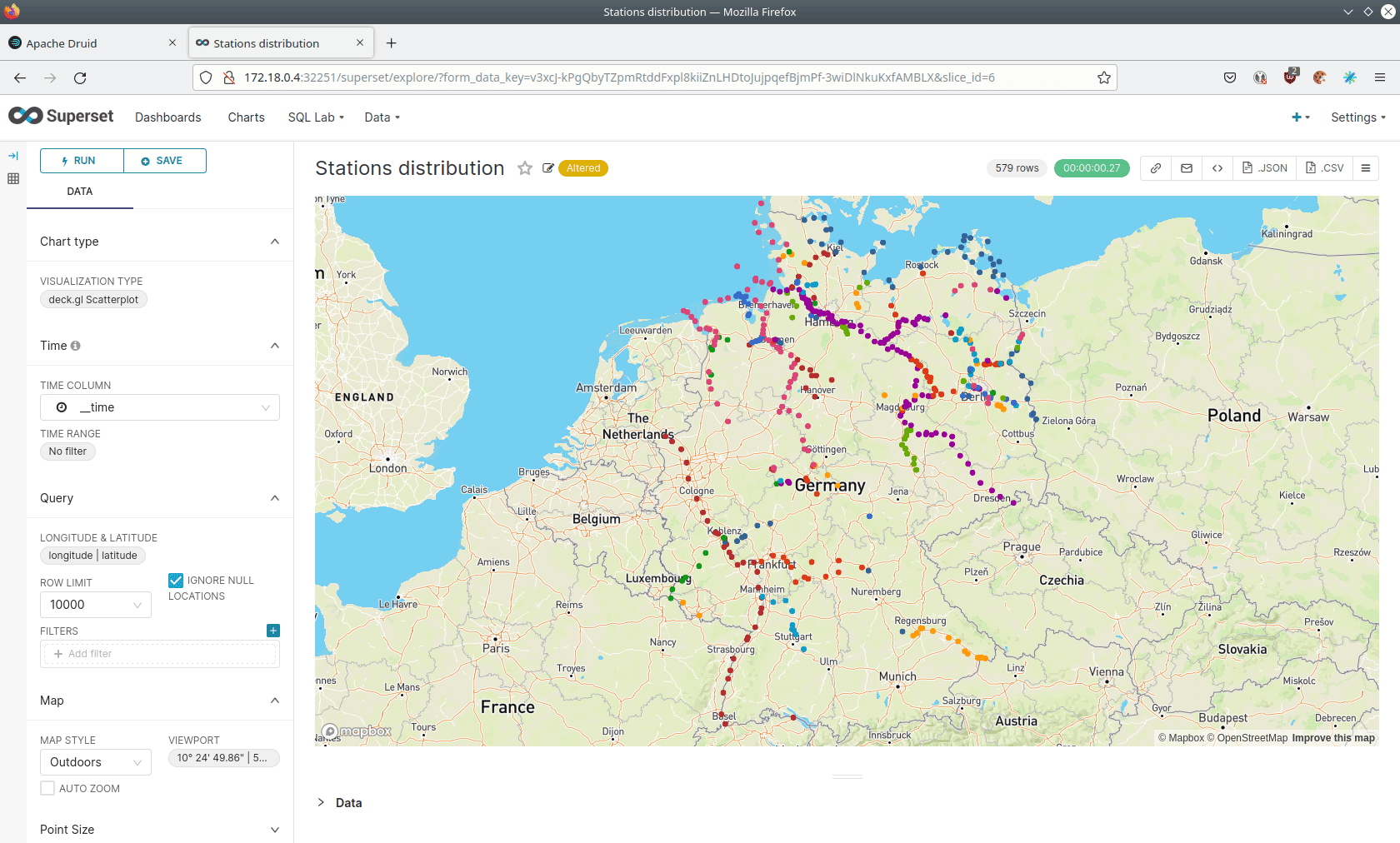
It includes the following operators:
- Apache Superset: a modern platform for data exploration and visualization. This demo uses Superset to retrieve data from Druid via SQL queries and build dashboards on that data.
- Apache Kafka®: A distributed event streaming platform for high-performance data pipelines, streaming analytics, and data integration. In this demo, Kafka is used as an event streaming platform to stream data in near real-time.
Apache Nifi: An easy-to-use, powerful system to process and distribute data. This demos uses it to fetch earthquake-data from the internet and ingest it into Kafka.
- Apache Druid: A real-time database to support modern analytics applications. This demo uses Druid to ingest and store data in near real-time from Kafka and provide access to the data via SQL.
- MinIO: An S3-compatible object store. In this demo, it is used as persistent storage for Druid to store all streamed data.
HOW-TO start,
within a Kubernetes-Cluster:
stackablectl demo install nifi-kafka-druid-water-level-data
You have questions or remarks?
Need more Info?
Contact Sönke Liebau to get in touch with us:

Sönke Liebau
CPO & CO-FOUNDER of Stackable

Newsletter
Subscribe to the newsletter
With the Stackable newsletter you’ll always be up to date when it comes to updates around Stackable!